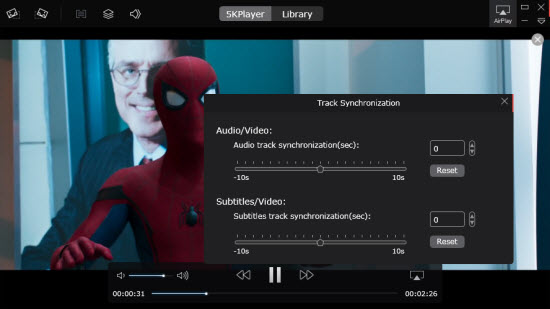
Similarly, the RAM usage stayed around 25 MB when playing the audio, and at 200 MB while rendering the video. However, the resources usage is also influenced by the size and quality of the media you want to play: while dealing with a 6.5 MB MP3 track, mplayer used about 3% CPU power, but while rendering a 16.13 GB MKV spiked the CPU usage to 140%.

#Edit in mplayerx movie#
Most of the heavy lifting is done by the open source mplayer movie player program, which means that the MPlayerX app will not need more than 8% CPU power and 60Mb of RAM on a 2GHz Intel Core 2 Duo iMac with 6GB RAM running OS X Yosemite. The app will either fail to parse the URL or display an error message saying that mplayer has quit without playing the media. On the other hand, using the same buttons on your Apple remote will actually help you navigate throughout the current video.Įven though the MPlayerX app should be able to parse and play media content hosted on YouTube, Vimeo, Youku, or Instagram, this function does not seem to work for some time now (we have installed older MPlayerX versions, and the issue persists). Interesting enough, if you are using the Go Back / Forward buttons in the MPlayerX controller panel, the app will actually try to find either the next or the previous “episode” in the folder.

Once connected, the Apple remote will allow you to seamlessly control the MPlayerX app. Keep in mind that, if your are running MPlayerX on OS X Yosemite, you might have to use a 3rd-party app to pair the Apple remote with your computer, such as Candelair, RemoteBuddy, or Sofa Control. In addition, MPlayerX comes with a Video Tuner and a Sound Equalizer which will allow you to fine-tune the output until you are satisfied with the rendering quality. MPlayerX integrates most capabilities one would expect from a media player: you can change the video aspect ratio, mirror or flip the image, increase or decrease the playback speed, adjust the volume, add subtitles and modify their delay. To control the playback, you can use hotkeys, trackpad gestures, your Apple remote, or the control bar that becomes visible on mouse hovering. To make the most out of the space available on your Mac’s desktop, the entire MPlayerX window is used to display the video content. On the other hand, the importing process is reduced to a simple drag and drop on top of the MPlayerX Dock icon. The most obvious drawback is the fact that MPlayerX does not come with playlist support: it can identify successive episodes if placed in the same folder, but you need to use a naming and numbering pattern for the media files. What’s more, the minimalist design ensures an efficient manipulation of your desktop space. The difference between MPlayerX and any other media player that it is built around the FFmpeg and MPlayer projects is represented by the ease of use with which the end user can perform almost any task.

MPlayerX takes advantage of two popular open source projects, FFmpeg and MPlayer, in order to help you play almost any type of media file on your Mac.
#Edit in mplayerx mac os x#
The native media support on Mac OS X is limited to QuickTime’s capabilities, so it’s no wonder that using media players that integrate 3rd-party libraries and codecs is a common practice.


 0 kommentar(er)
0 kommentar(er)
